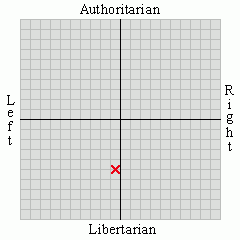What is uBuntu?
Loosely translated, uBuntu means "I am because we are." Briefly described uBuntu is an African system of values that predates the Ten Commandments by two and a half millennia. uBuntu is taught by example. It illustrates the humanness, the value of community, and the value of caring for and sharing with the community.The Origin
uBuntu is not religion based but rather it originates in ancient African spirituality and cosmology. How far back we do not know. Africa is the the ancient "cradle of humanity," and it is thought that uBuntu may be the oldest, still existing system of human values, originating in the ancient, indigenous African curiosity of the origins and meaning of life.To find the basis for uBuntu we would look to Egypt and the concept of Ma’at. Records have been found in Egypt and in Ethiopia which date to the period of the Old Kingdom, circa 2350 BCE. These records tell of the Forty Two Laws of Ma’at and the Seven Cardinal Virtues (truth, justice, propriety, harmony, balance, reciprocity and order) that instructed the people of that era on correct moral behaviour.
Ma’at as uBuntu
 Depictions of Ma’at show a sitting or standing goddess, often with a scale. She will have an ostrich feather in her headband and will be carrying a sceptre in one hand and an ankh in the other. The role of Ma’at was to maintain balance in the universe by regulating societal behavior. It was her duty to determine if a person would have eternal life by placing the heart on one side of the scale of justice and the feather (representing truth) on the other side. If balance was achieved the person had achieved eternal life. It is believed that all religious afterlife or resurrection myths have roots in Ma'at.
Depictions of Ma’at show a sitting or standing goddess, often with a scale. She will have an ostrich feather in her headband and will be carrying a sceptre in one hand and an ankh in the other. The role of Ma’at was to maintain balance in the universe by regulating societal behavior. It was her duty to determine if a person would have eternal life by placing the heart on one side of the scale of justice and the feather (representing truth) on the other side. If balance was achieved the person had achieved eternal life. It is believed that all religious afterlife or resurrection myths have roots in Ma'at. The two concepts, uBuntu and Ma’at, are interchangeable. The northern, central and western African religions were based upon a Hermetic philosophy of sciences originating with Hermes Trismegistus of Alexandria. This is the theosophy of Khem (Ta Shema) or ancient Egypt. Ma’at is the Ancient Egyptian/Ethiopian symbol of uBuntu.
The two concepts, uBuntu and Ma’at, are interchangeable. The northern, central and western African religions were based upon a Hermetic philosophy of sciences originating with Hermes Trismegistus of Alexandria. This is the theosophy of Khem (Ta Shema) or ancient Egypt. Ma’at is the Ancient Egyptian/Ethiopian symbol of uBuntu.In interesting correlation to the spiritualism of the indigenous peoples of the Americas, the characteristics of Ma’at have both metaphysical and ethical components. Therefore the laws of nature, community, and the divine, as well as the ideals of honesty, caring, sharing, truth, and order are all interchangeable. The concept of Ma'at relies less on the five senses to determine truth and instead ventures beyond the simply physical to look to the metaphysical world as well. uBuntu is considered to provide order and balance to the universe through humanistic love.
Humanism in uBuntu
To the African, the art of achieving personhood requires that it be earned by a lifetime of sharing and caring. To exist requires existing for the community and for all others who exist. The self only emerges by cooperative relationships with others and with the world. uBuntu means that a human can never be alone as the person is in continual communication and communion with others and with nature. The human is constantly feeling the pulse of the community and is always aware of humanity's impact on the environment around him.Think of uBuntu as the Golden Rule
In Ubuntu we see a balance between the human and humanity. The Golden Rule states that we should “Do unto others as you would have them do unto ourselves.” uBuntu would say "I am because we are. We are as one." What is done for one is done for all. What is done to one is done to the other. There is ethic of reciprocity.The tenets of uBuntu may be stated this way:
One should treat others as one would like others to treat oneself (Golden Rule.)
One should not treat others in ways that one would not want to be treated (Silver Rule.)
On April 4, 1967, a great man and proud descendant of Africa; a man who embodied a 20th century uBuntu... spoke these words:
"A genuine revolution of values means in the final analysis that our loyalties must become ecumenical rather than sectional. Every nation must now develop an overriding loyalty to mankind as a whole in order to preserve the best in their individual societies."
On November 22, 1963, the United States lost a president to the culture of incipient hate and fear that seems to have been part of the nation's fabric from the time the first Europeans landed on these shores. John F. Kennedy was a friend of the man speaking those words, and on April 4, 1968, Dr. Martin Luther King, Jr. was assassinated by a sniper's bullet just like JFK before him. A year and two month later, King's ally and brother to the assassinated president, Robert F. (Bobby) Kennedy, met the same fate.
Fifty years later we have almost daily mass shootings and multiple murders across the land, yet only when 20 school children are gunned down by an emotionally disturbed man, or an entire nightclub full of patrons become target practice for another lunatic, or almost 600 country music fans fall victim to automatic weapon fire do we even hear about it in the news. It has become that common and we have become that lacking in empathy. White collar crime and ghetto violence have become commonplace. Our representatives in government are puppets for big money interests, installed for the purpose of fleecing their constituents, and almost half of all Americans voted to install a plunderer in chief... a hater in chief into the most powerful office on the planet.
This country and Ubuntu are strangers. It is this which we must change.
~~~














